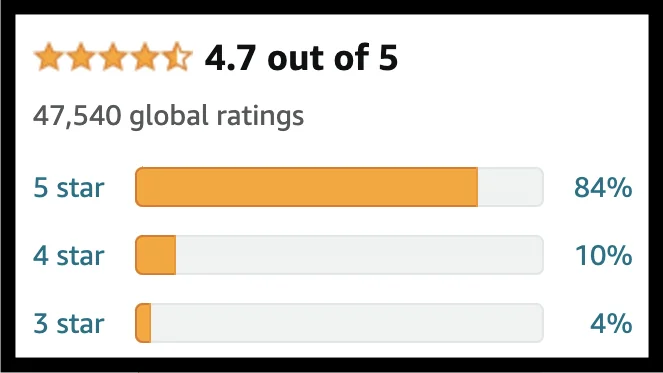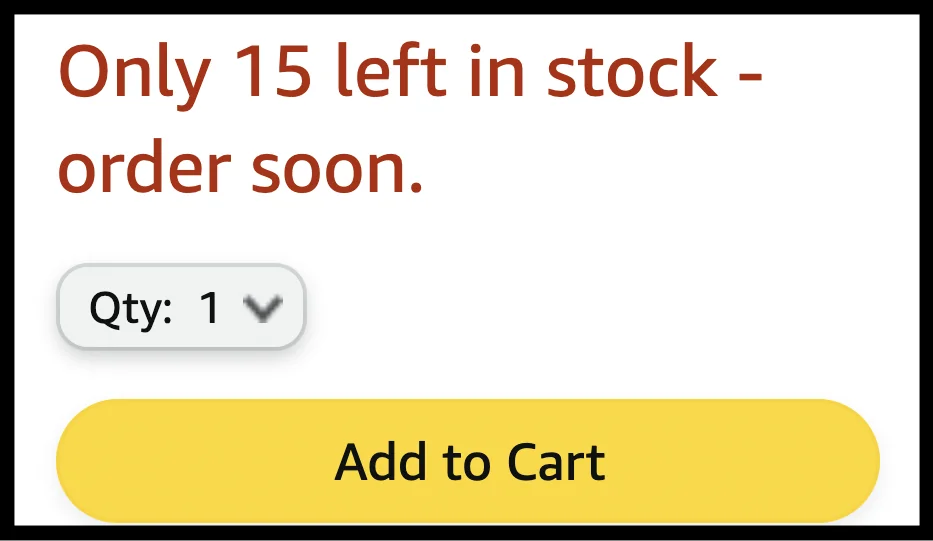Getting visitors to your eCommerce website is only one step in the conversion and sales process. Once they make it to your store page, they have the opportunity to experience your business first hand and form an opinion. There are several features that consumers expect to see on an eCommerce website. This will impact whether or not they decide to make a purchase.
ECommerce businesses don’t have a friendly customer service assistant waiting to meet and greet potential customers. This means your website has to do all of the impressing for you. It needs to give visitors the best experience possible in the hope they will like it enough to spend some money.
If you look at the huge variety of eCommerce websites out there, it can be challenging to know how to make yours stand out from the rest. However, there are certain features that are a must-have for any eCommerce website. These can help you turn visitors to your website into paying customers of your business.
Here are 9 features that you should be sure to include in your eCommerce website.
1. Usability

If there’s one thing that’s going to put potential customers off almost immediately, it’s poor site usability. ECommerce websites need to be easy to use so visitors can navigate their way around them without any difficulty. This is an invaluable feature for any website.
When consumers arrive at your website, they are likely already looking for a specific product to purchase. If they’re able to find it quickly and easily, they are much more likely to buy it. Any difficulty in searching for a product or finding their way around your website can very quickly frustrate a potential customer. This can cause them to leave and shop elsewhere.
A good way to check if your eCommerce website is user-friendly is to ask several people outside your business to try to purchase something from it. As first-time users of your website, they will be able to offer you objective and useful feedback as to how they found their experience with your business.
They could very well bring up points that you might not have even thought of as a usability issue. Things like having too much going on (lots of ads, banners, and text, for example) can be off-putting and distracting to users. Even the colors used on your website can make a difference. Your eCommerce website is the public-facing part of your business. It needs to look good and it needs to work even better.
2. Free Shipping
Subscribe to the eCommerce newsletter for
top industry insights

Who doesn’t love free shipping? When making their choice of where to buy from, a key component in their process is whether a business offers free shipping or not. In fact, one study found that 84% of consumers have made an online purchase specifically because shipping was free.
If you sell similar items at similar prices to other businesses, then shipping costs could be the final deciding factor for a potential customer. The number one reason people shop online is free shipping. You can see why charging for shipping significantly reduces your chances of making sales.
Featuring free shipping could be seen as a quick win. You don’t need to put in any extra time or effort into your business but it can still make a big impact on your success.
There is an obvious downside, though. Your business will have to foot the bill for shipping. However, this is overshadowed by the potential increase in sales, customer satisfaction, and returning customers free shipping can bring. If the cost of free shipping is tough to bear, you can also set a minimum purchase amount to qualify for free shipping. This has the added benefit of incentivizing customers to buy more.
Free shipping is seen as a basic offering by many online shoppers. Not having it as part of your eCommerce website will very likely put customers off making a purchase. This is particularly true if the products you’re selling are available elsewhere where free shipping is available.
Some products incur high shipping costs, and customers may need to pay these. However, finding a way to make free shipping work for your business is an easy way to increase sales.
3. Safety and Security

The internet has become a popular playground for hackers, scammers, and other criminals. These people are trying their best to earn money at the expense of others. Therefore, customers tend to be on the lookout for anything that appears to put them at risk.
Your eCommerce website needs to have security features that ensure that your customers (and their data) stay protected from criminal activity. This is particularly important during the checkout process, when payment information is given.
An address verification system and credit card verification are both extremely important when it comes to keeping people’s money safe. Fraudulent sales on your website leave your business vulnerable to costly refunds and even legal proceedings in some cases. Having these features is a big, but showing your customers that you have them can be even more important.
Clearly presenting your safety policies and security processes can reassure customers that you’re looking after their best interests. Showing that your website is safe and secure is something that is expected by most modern consumers. They want to know their money and data will be safe while shopping online. If customers suspect that their information won’t be secure on your website, they will quickly leave and shop elsewhere.
4. Customer Reviews

Allowing customers to leave reviews is a great way of being honest and transparent. Whether a website offers products or services, reviews are a key part of the sales process.
Many customers won’t buy a product without reading reviews from past users. In fact, 98% of consumers say that reviews are an important resource when they make buying decisions. Many people will avoid buying from a new website without making sure others have had good experiences with the business.
Allowing potential customers to easily find and read reviews is a crucial feature. If reviews appear to be hidden or false in any way, it can be damaging to your business’s reputation. Too many perfect reviews can even appear suspicious. This results in people not wanting to buy from you.
It’s worth spending some time figuring out the best way to gather reviews from your customers. You want a good number of real reviews for each product in order to encourage people to buy. Some sellers set their eCommerce websites to automatically ask customers for reviews. Others request reviews via email or in a message when the customer receives their purchase.
Not only does this give you the opportunity to find out what customers think about your business and products, but it also shows customers that you are interested in what they think. Any business that shows it cares about their customer experience is more likely to succeed than those that don’t feel accessible to customers.
5. Customer Support

Customers frequently need help while shopping online. That help needs to be readily available if you want them to buy from your business. Customers may need support ranging from questions about a product to wanting more information about your business processes. They may have shipping issues, product warranty queries, or questions you have never even thought about.
Being able to offer top level customer support can make a huge difference to your customer’s experience. This impacts their willingness to return to your business or recommend it to others.
Live chat is a preferred method of contact for many customers. It gives them the ability to talk in real-time to someone who can help them with their query or issue almost immediately. They don’t have to pick up their phone or spend days waiting for a reply.
If live chat isn’t something you can offer on your eCommerce website, then other methods of contacting you must be available. Contact forms, call-back requests, or even a link to send you an email can all help keep customers happy. Just make sure they feel like you are doing your best to help them.
It’s important to remember that response time matters. Customers usually expect a quick answer to their questions. If you’re not able to respond within a few hours, they could decide to shop with another business.
Customer satisfaction is important to any business. For eCommerce businesses with no face-to-face contact, it can be harder to deal with customers. That’s why offering help on your website is so important. You want to give your customers the best service possible.
6. Available Information

If you provide customers with the right information, the majority of them will be able to resolve their issues on their own. ECommerce websites that have a frequently asked questions (FAQ) page or a knowledge base of some kind will likely have less contact with customers who are trying to solve a common problem.
Generally, customers want their questions answered and their issues resolved as soon as possible. By giving them access to the answers to common questions, customers will be able to get an almost immediate solution to their queries and issues. This allows them to make an informed decision about whether or not to purchase from your business.
Popular content
- 14 strategies to improve your eCommerce business’s financial health
- 50+ ChatGPT prompts to elevate your eCommerce business
- A guide to pricing your product on Amazon
- 5 marketing metrics all eCommerce businesses should track
- All about Amazon PPC
Knowledge bases, help centers, and FAQs remove some of the barriers that prevent people from actually buying a product. Once their questions are resolved, they’ll be more likely to make a purchase.
Potential customers don’t want extended interactions with you or your business. They don’t want to wait for a reply to an email and they don’t want to call and speak to someone on the phone. They simply want to have their questions answered quickly so they can get an answer with minimal effort.
FAQs, knowledge bases, and help centers all help customers to help themselves. This is a good thing for them and for your own workload.
7. Live Product Availability

It can be extremely frustrating for customers if they spend time and effort looking for the product they want to buy, find it, and go through the checkout process, only to be told it’s out of stock. On the flip side, a product that appears to be out of stock on your website when it’s actually ready for sale can cause costly issues for your business. This is a sure way to lose sales.
Your eCommerce website should to be able to show accurate live product availability. This doesn’t need to be an exact figure of how many are left in stock. It is important, however, that your website correctly display if an item is in stock or out of stock.
To avoid going out of stock in the first place, your eCommerce management platform should be able to notify you when your inventory is getting low. Then, you can place a new order as soon as possible. Sometimes, however, despite your best efforts, products may go out of stock. As long as your website clearly shows customers that this is the case, you can avoid lots of negative interactions.
Maintaining a healthy inventory takes capital. If you’re looking for a funding solution to help you stay in stock, check out a personalized Growth Plan from 8fig. We offer fast and flexible capital that will help you ensure that you never go out of stock again.
8. Analytics

This is a feature just for the owner of an eCommerce website. It isn’t directly for the customer’s benefit, but that doesn’t make it any less important. Having detailed reports and analytics on the performance of your website can help you make good decisions about how to improve your website in the future.
You should be able to see the number of unique visitors your website is getting, the pages they are looking at, how long they stay on each page, and their behavior while on your website.
Knowing how customers interact allows you to make your website more engaging and successful. Identifying which pages and products are holding the attention of potential customers is very useful because you can use them as models for lower-performing pages.
Being able to see how your website is performing in search engine rankings is also important. If you’re able to get your site onto page one of search results, you have a big advantage over other businesses.
If your eCommerce website can give you detailed reports and analytics, you can make suitable changes to make it as successful as possible.
9. Loyalty Program

Some eCommerce businesses make the mistake of only focusing on attracting new customers. They offer heavy discounts and other benefits to anyone placing their first order on their website.
While this can be a great way of generating new customers, it does nothing for existing customers. They may become frustrated if they always have to pay full price for everything on your website. Implementing a loyalty program benefits customers who continue to shop on your website. It helps make them feel more appreciated and encourages them to buy more.
Coffee shops are a good example of this type of loyalty program. Many of them give out reward cards that get stamped every time the cardholder buys a coffee. Once a customer buys ten coffees, their eleventh coffee is free. This is an excellent way to increase customer retention. Customers who hold the coffee reward cards feel a sense of loyalty, so they continue to return and are rewarded for doing so. The same is true for eCommerce businesses.
Your eCommerce website should have incentives for returning customers. This can be an increasing discount with each order placed or a free gift with their next order. Special offers for your loyal customers is a great idea too. Rewarding loyalty is equally as important as attracting new customers to your business. Many eCommerce businesses owe their success to returning customers.
Once your website is helping you maximize your sales, you’ll need to make sure your business can keep up. A healthy cash flow is key to staying in stock and growing your store. 8fig offers eCommerce sellers continuous, flexible capital that is infused into your business at every stage of your supply chain. Sign up for a Growth Plan today and see how 8fig can help your business reach its full potential.
Subscribe to the eCommerce newsletter for
top industry insights
to our blog
Read the latest
from 8fig

Video ads can make or break your eCommerce success. Learn five essential strategies to create high-converting campaigns that captivate and convert.

Crack the code to funding your eCommerce business with this step-by-step guide, and learn how to secure the capital you need to grow while staying on top of your strategy.

From managing cash flow to optimizing expenses, this guide offers actionable insights to secure your financial future. Explore the essential steps to drive profitability and long-term success.
